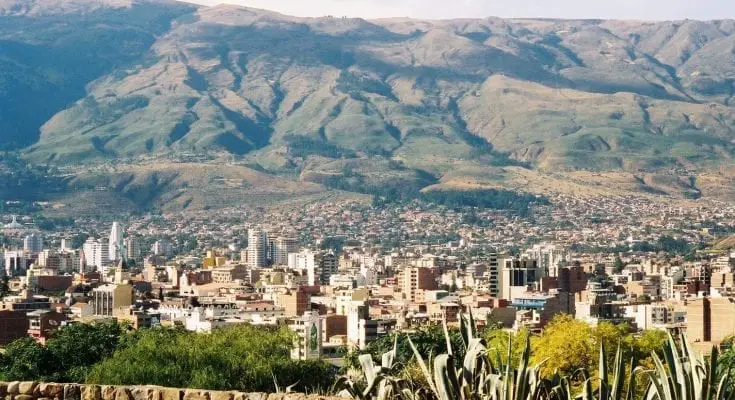Bolivia is a land of captivating contrasts and cultural profundity, nestled high within the embrace of the Andes Mountains. Rich in both natural beauty and historical depth, it is a country that invites curiosity and reverence. Here, we delve into some of the most intriguing facts about Bolivia that highlight its unique appeal, merging nature’s wonders with the vibrant tapestry of its cultural heritage.
1. The Roof of South America
Often referred to as the “Roof of South America”, Bolivia boasts the world’s highest navigable body of water, Lake Titicaca. Perched at an elevation of approximately 12,500 feet (3,812 meters), this vast expanse of blue is not only breathtaking but also steeped in mythology. The indigenous Aymara believe it to be the birthplace of the sun, a sacred origin point that enriches the lake’s already profound significance.
2. The Salar de Uyuni: A Mirror to the Sky
The Salar de Uyuni, the world’s largest salt flat, stretches across nearly 4,000 square miles and sparkles like a natural mirror after rainfall. This ethereal landscape has the ability to reflect the skies, creating a breathtaking optical illusion that draws photographers and adventurers alike. It harbors lithium, a precious resource in modern technology, fueling the conflict between nature’s untouched beauty and industrial demand.
3. The Cultural Melting Pot
Bolivia’s population is a mosaic of cultures, enriched by a diverse array of indigenous groups, including the Quechua and Aymara peoples. This confluence of traditions is vibrantly manifested in the country’s festivals. Take, for instance, the Oruro Carnival, an extravagant affair featuring vivid costumes and traditional music that narrates Bolivia’s rich folklore. The intricate dances, such as the Diablada and Morenada, tell tales of conquest, resistance, and spirituality, echoing through the centuries.
4. The Bittersweet El Alto
Perched at a dizzying altitude, El Alto is one of the highest major cities in the world. It serves as a gateway to La Paz, often referred to as the “most unique capital.” El Alto transforms into a bustling market by day, where street vendors sell everything from llama meat to handwoven textiles. Here, the air is infused with the scent of freshly cooked anticuchos and the sounds of lively barter, creating a dynamic atmosphere that vibrates with energy.
5. Mysteries of the Nazca Lines: Influence Spread Far
Although primarily associated with Peru, the intriguing Nazca Lines find their echoes in Bolivia through geoglyphs found in the region. Enigmatic figures carved into the earth connect the cultural lineages of the Andean civilization. These massive drawings of animals and shapes provoke questions about the ancient peoples’ understanding of astronomy and their connection to the cosmos, illuminating the mysteries of a shared heritage.
6. A Land of Biodiversity
Bolivia’s ecological diversity rivals that of any nation on the planet. From the high-altitude Andean plateaus to the lush Amazon rainforest, the country is home to a myriad of ecosystems that foster an incredible variety of flora and fauna. The Madidi National Park, in particular, is a UNESCO Biosphere Reserve that boasts over 11,000 species of plants, 1,000 species of birds, and a staggering range of mammals, including jaguars and pink river dolphins. This biodiversity serves as a reminder of the delicate balance of ecosystems and the necessity of conservation.
7. The Legacy of Ancient Civilizations
Bolivia is home to significant archaeological sites that whisper tales of ancient civilizations. The ruins of Tiwanaku, a pre-Columbian city, offer insights into advanced engineering and astronomical knowledge upheld by its creators. The site’s monumental structures, such as the Akapana Pyramid, suggest a sophisticated society that thrived over a millennium ago, reflecting both ingenuity and the deep connection with their environment.
8. Gastronomy: A Flavorful Journey
Bolivia’s culinary landscape is a testament to the country’s rich cultural melange. Traditional dishes such as salteñas, a delectable pastry filled with meat, potatoes, and spices, reflect the fusion of indigenous and Spanish influences. Additionally, the use of local ingredients such as quinoa and chuño (dehydrated potatoes) highlights Bolivia’s agricultural heritage and nutritional ingenuity. Each bite of Bolivian cuisine unearths stories of survival, adaptability, and creativity.
9. The Potosí Silver Mountain: A Tale of Wealth and Woe
Potosí, once one of the richest cities in the world due to its silver mines, stands as a monument to both abundance and exploitation. The Cerro Rico mountain, described as “the mountain that eats men,” bears testament to the grueling labor endured by miners throughout history. Today, its legacy is a somber reminder of the consequences of colonial greed intertwined with the human spirit’s resilience.
10. The Power of the Sun: Aymara Spirituality
The Aymara people celebrate the Inti Raymi, or Festival of the Sun, to honor the sun god Inti. As the sun reaches its zenith during the winter solstice, vibrant rituals symbolizing gratitude and the cyclical nature of life take center stage. The colorful ceremonies are reflective of a deep spiritual connection to the land, highlighting the importance of ancestral reverence amidst modernity.
Conclusion
Bolivia, with its kaleidoscopic landscapes and profound cultural depth, captivates those who journey through its realms. From the snow-draped peaks of the Andes to the enigmatic salt flats, it is a land steeped in stories, inviting exploration and admiration. These fascinating facets of Bolivia encapsulate a nation where history, culture, and nature coalesce, creating an indelible impression on the heart and mind of every traveler.









